
8 Steps to Install Magento 2 Extra Fee Extension
Wondering how to enhance your Magento store's revenue streams? Magento 2 extra fee extension enables businesses to apply charges for extra services. It allows e-commerce stores to charge customers for gift wrapping, installation fees, etc.
This tutorial will cover the steps to install a Magento 2 extra fee extension.
Key Takeaways
-
Understand how the Magento 2 extra fee extension can boost revenue streams.
-
Learn the types of additional charges to implement in Magento 2.
-
Get step-by-step guidance on installing and configuring the extension.
-
Explore best practices for managing extra fees in your Magento 2 store.
What is Magento 2 Extra Fee Extension?
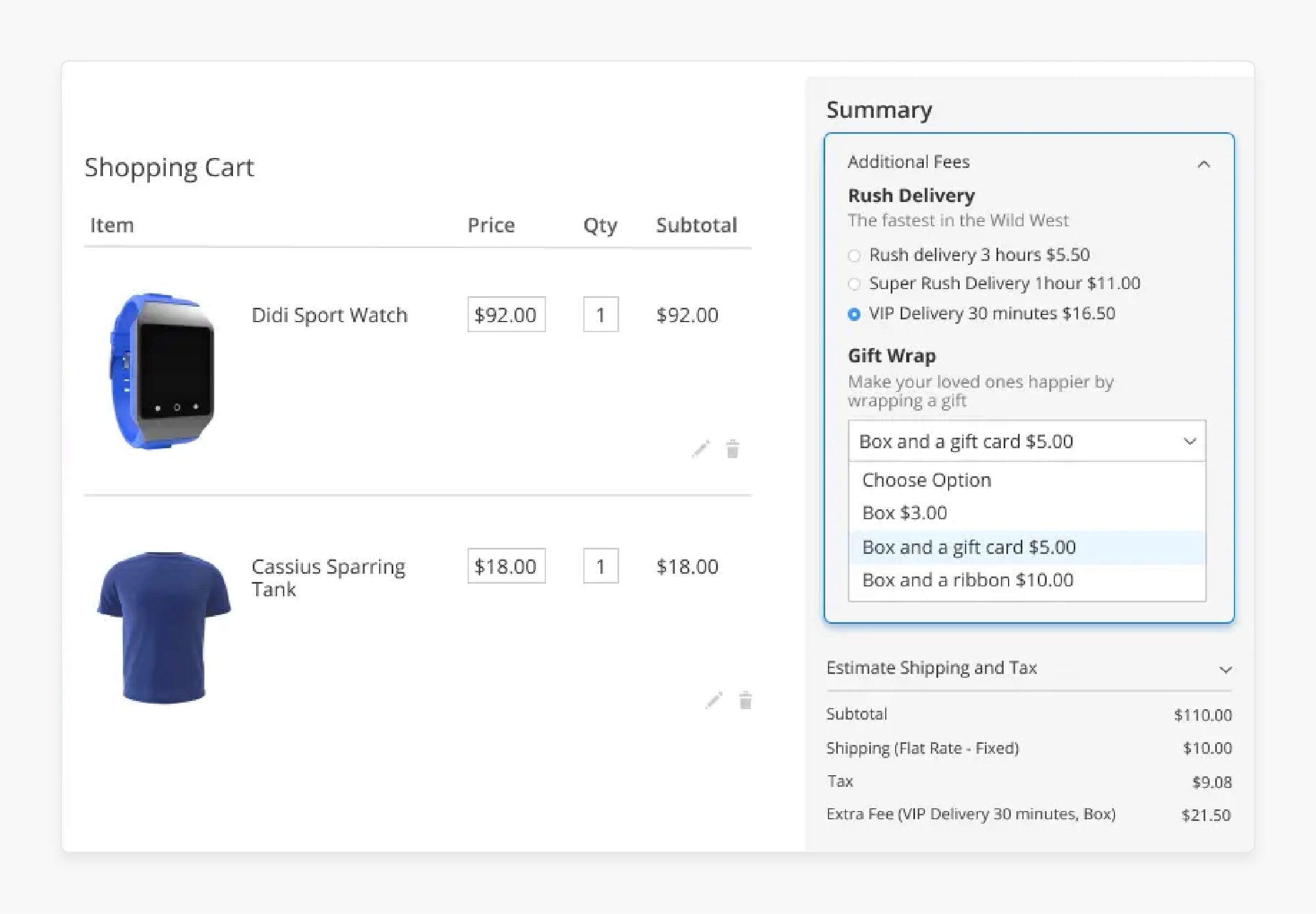
The Magento 2 Extra Fee Extension helps online stores add an extra charges during checkout.
The Magento 2 extra fee extension lets you charge for unique services. The additional services includes gift wrap or faster shipment.
-
Store owners can charge fees based on how customers pay, like a credit card.
-
It gives customers clear information about extra charges before they buy. The extension shows these fees on the cart page.
-
The fee Magento 2 extension helps stores make more money.
Key Features of Magento 2 Extra Fee Extension
1. Multiple Extra Fee Options
-
Store owners using the additional fee extension can customize fees for different services. It enhances flexibility in Magento pricing strategies.
-
For example, extra shipping fees to offer faster delivery.
-
Store owners can charge a separate fee for special items that need extra care when shipping. It ensures accurate cost reflection based on service levels chosen by customers.
2. Transparent Display
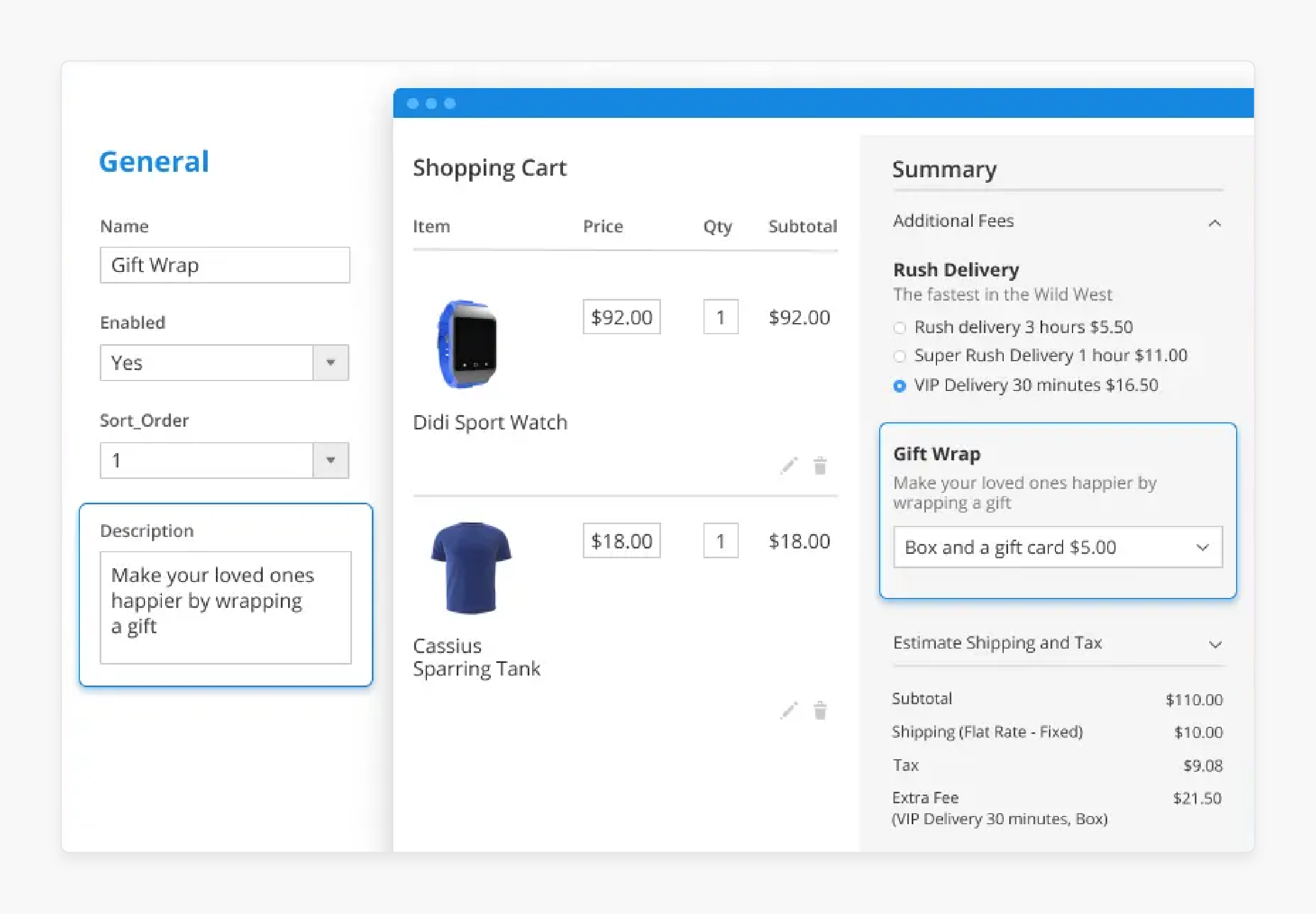
-
The extension for Magento 2 ensures to display extra fee on the cart and checkout pages. It is important to have transparency for the customers.
-
The fee extension also allows customers to understand the total cost of their purchase.
-
Store owners add extra charges for additional services before the transaction. The clarity helps customers to prevent any surprises at the final stages of buying.
3. Flexible Fee Calculation
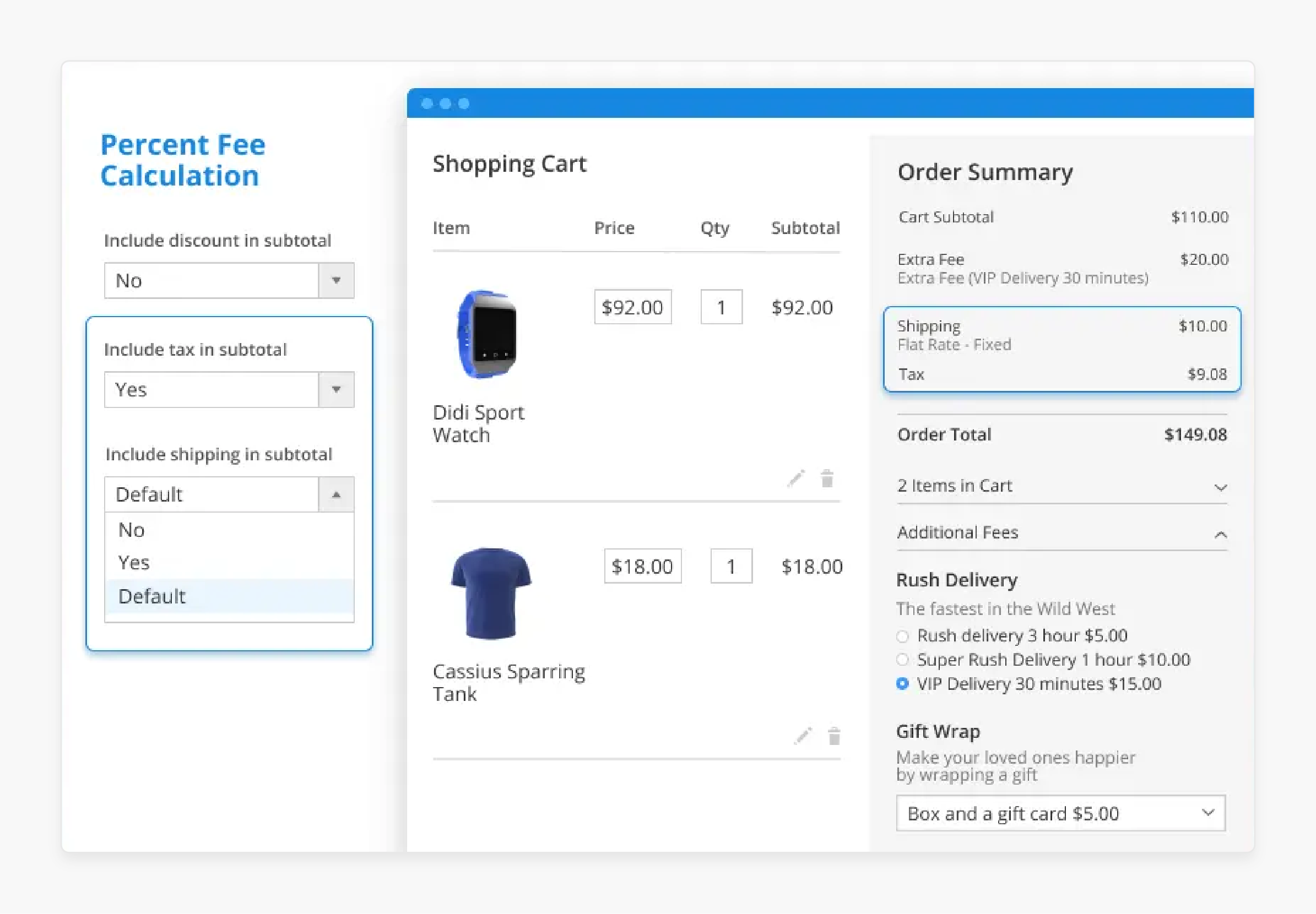
-
The Magento 2 extra fee module allows support for a variety of fee types. It includes handling fees, a surcharge for Magento 2 module, and specific payment fee amount methods.
-
The flexibility enables store owners to make adjustments to fees under business strategies.
-
For instance, applying handling fees for special packaging requirements to cover processing costs.
4. Revenue Generation
-
Magento stores can charge fees for services like gift wrapping or express shipping. By monetizing these add-ons, such as additional services or customization options. Businesses can broaden their sources of revenue beyond core product sales.
-
Implementing fees for specialized handling or packaging materials helps maintain profit margins. It safeguards the profit margins from being diminished by these expenses.
-
The extension allows store owners to generate extra revenue by offering premium services. Customers are more inclined to upgrade their purchases. The strategy boosts the store's average order value.
-
During peak periods like holidays, adding rush fees can profit from high demand. It maximizes the revenue during busy times.
5. Easy Integration
-
The fee for Magento 2 additional fee is designed to be user-friendly and easy to install.
-
It ensures accessibility for Magento 2 store owners. The owners can integrate the extension into their existing store framework.
-
Add extra fee in checkout to enable businesses to customize fee structure preferences.
-
It enhances practical choices for checkout processes without any technical knowledge or resources.
5 Types of Extra Fees for Magento 2 Extension
1. Customizable Fees
- Customizable fee structures provide significant flexibility,
-
Implementing tiered pricing allows businesses to reduce fees as order values increase. It encourages customers to place larger orders to reduce costs per item or service.
-
Customizable fees are adjusted based on shipping destinations. It ensures that customers are charged according to different geographic regions.
-
Offering loyal customers discounts and charging high-value clients premium fees boosts customer loyalty. It maximizes revenue by customizing prices to different customer purchasing behaviors and values.
-
-
For example, a furniture store might adopt a tiered delivery fee structure,
-
Orders under $500: $50 delivery fee
-
Orders $500-$1000: $25 delivery fee
-
Orders over $1000: Free delivery
-
2. Handling Fees
-
Store owners can apply handling fees for products requiring special care during shipment.
-
The fee ensures that they are properly prepared for safe delivery to customers. For example, products such as glassware or electronics may require additional charges.
-
The charges cover the costs associated with specialized materials to protect fragile items. It ensures the products are delivered intact and undamaged to customers.
3. Payment Method Fees
-
Extra fee extensions for Magento can add extra charges for particular payment methods. It includes credit card transactions to compensate for processing expenses in Magento.
-
For instance, applying extra fees for credit card payments by financial institutions. It helps businesses maintain profitability and offers flexibility in payment options to customers.
4. Service Fees
-
Service fees enable businesses to add extra fees for different services beyond product price. The services offered may include product installation.
-
For example, a store could provide gift wrapping for an extra $5 per item at checkout. It caters to customers seeking added convenience or special presentation for their purchases.
5. Shipping Fees
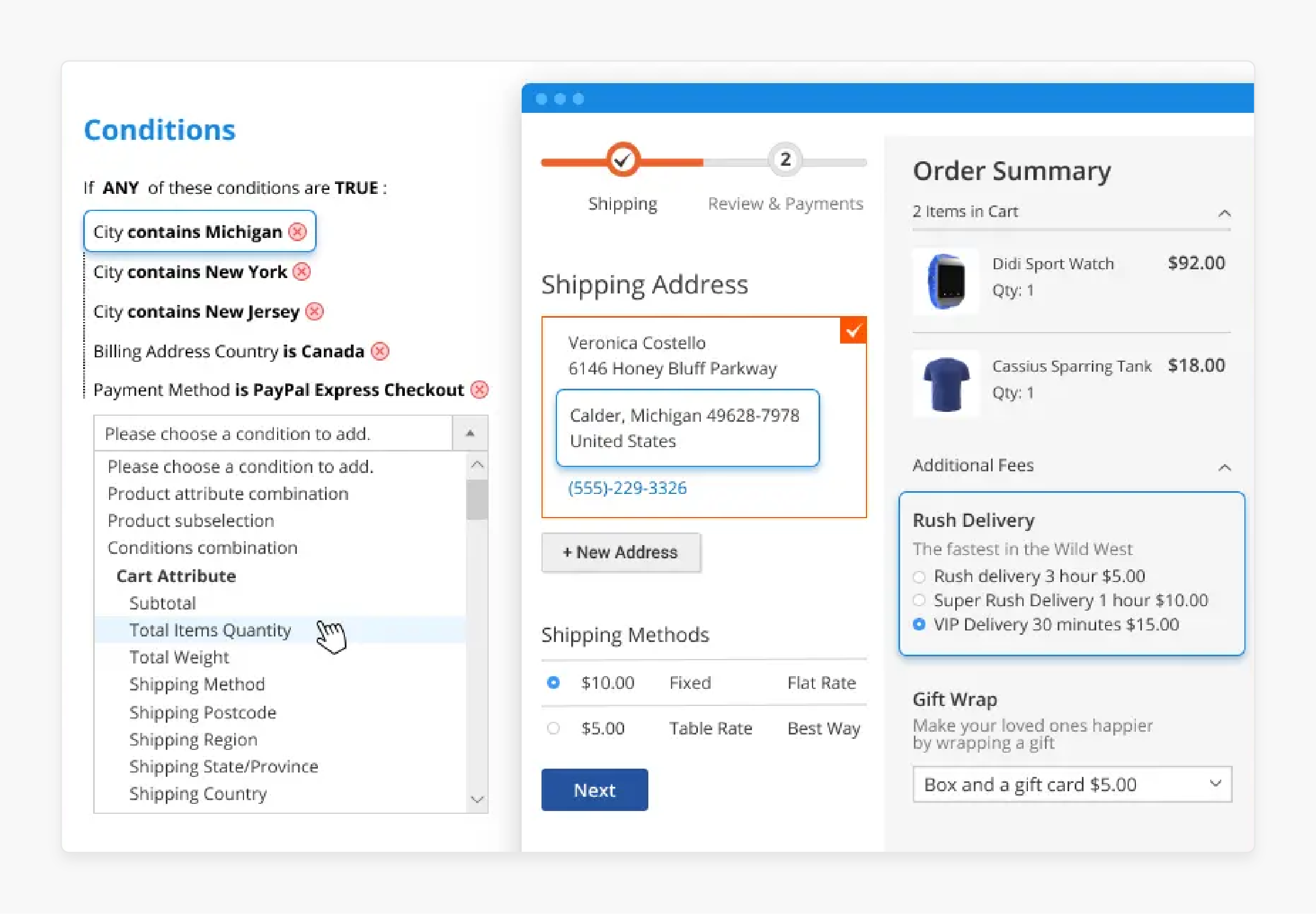
-
The Magento 2 payment fees allows merchants to charge extra fee for shipping. The shipping options include express or international delivery.
-
For instance, customers who choose overnight shipping can be charged extra for delivery.
-
It enhances customer satisfaction by offering flexibility in delivery speeds.
8 Steps to Install Magento 2 Extra Fee Extension
Step 1: Prepare Your Environment
-
Ensure you have access to your Magento 2 store's admin panel.
Step 2: Download the Extension
-
Purchase or obtain the Extra Fee Extension from a reputable Magento extension provider.
-
Download the extension package (usually a zip file) to your local computer.
Step 3: Upload the Extension Files
-
Extract the zip file containing the extension.
-
Connect to your Magento 2 server using FTP, SSH, or a file manager in your hosting control panel.
-
Navigate to the root directory of your Magento 2 installation.
Step 4: Install the Extension
-
Access your server via SSH or use the command line.
-
Run the following commands from your Magento root directory:
php bin/magento setup:upgrade
php bin/magento setup:di:compile
php bin/magento cache:flush
- Compile the code, deploy static content, and flush the cache.
Step 5: Configure the Extension
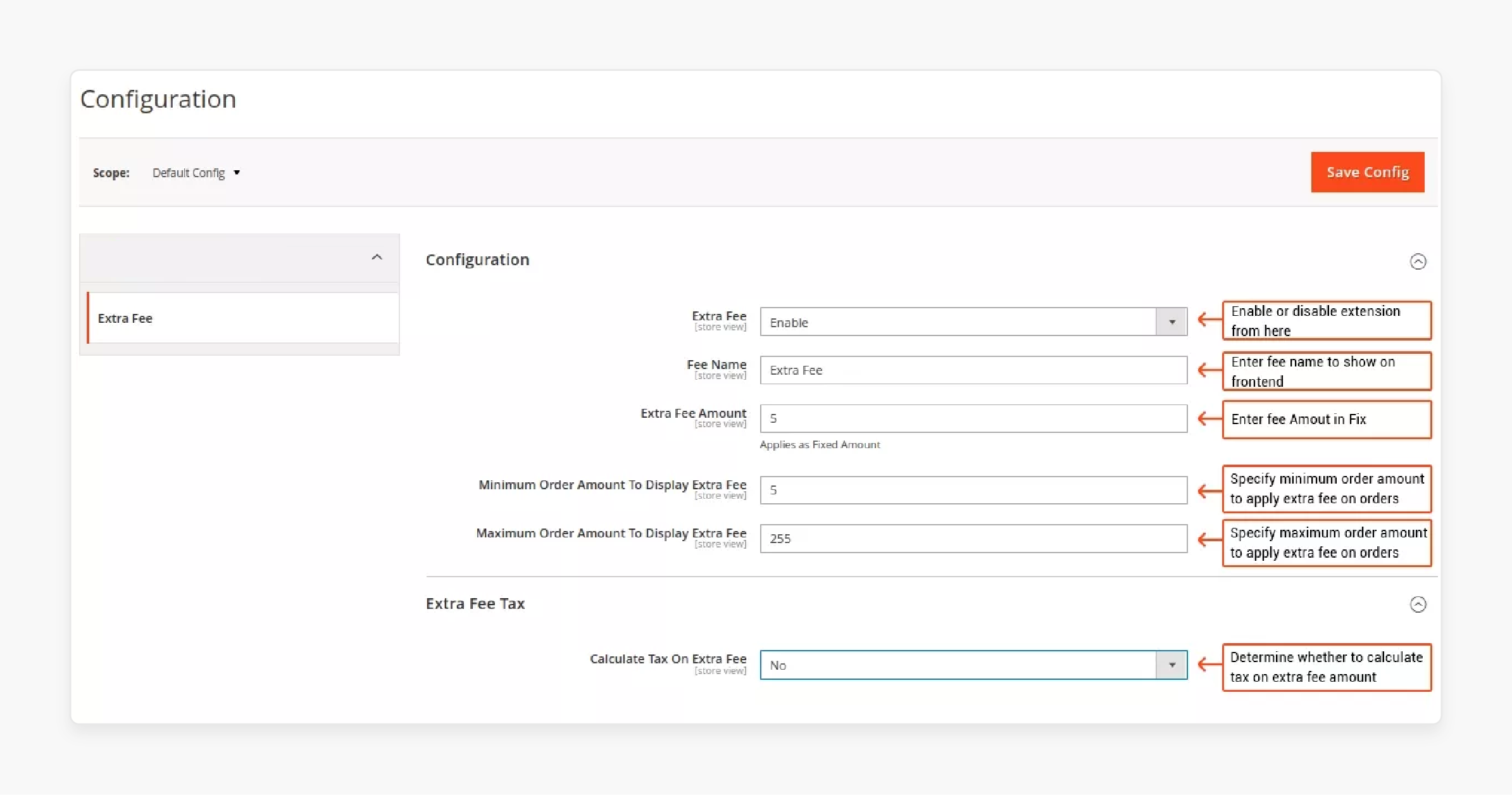
-
Log in to your Magento 2 admin panel.
-
Navigate to Stores > Configuration.
-
Configure any settings related to the extra fee extension.
-
Save the configuration settings after making changes.
Step 6: Test the Extension
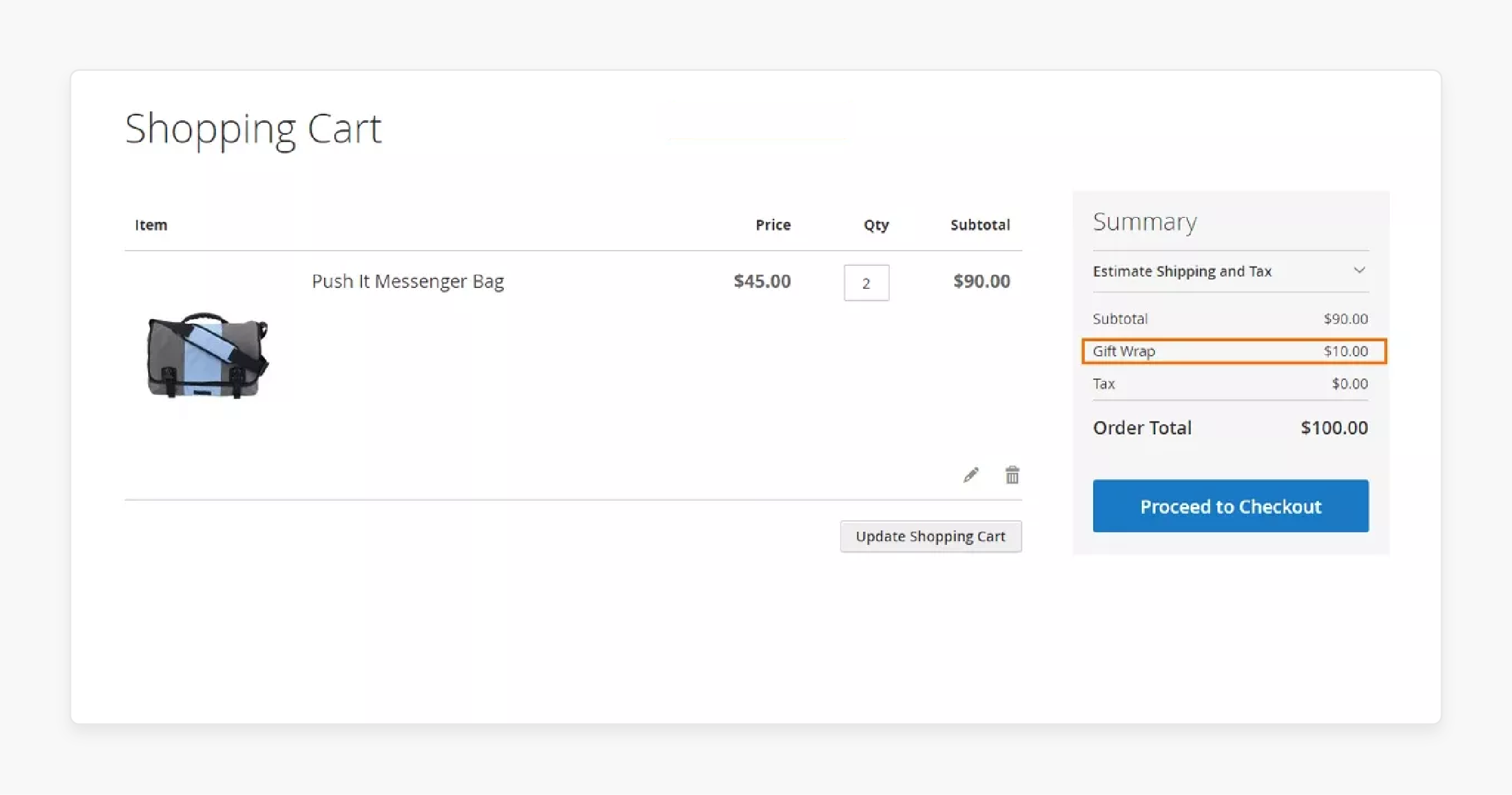
-
Test the functionality of the extra fee extension on your Magento store.
-
Ensure that extra fees are applied correctly according to your settings.
Step 7: Final Checks
-
Double-check your store's front end and back end.
-
Ensure that the extension is working as expected.
-
Verify that there are no conflicts with other installed extensions or themes.
Step 8: Documentation and Support
-
Refer to the extension provider's documentation for any specific instructions or troubleshooting steps.
-
Contact the extension provider's support team if you encounter any issues during installation.
Best Practices for Optimizing Extra Fee Extension in Magento 2
1. Transparent Communication
-
Transparent communication in Magento is important for customers. Using clear, simple names for fees to ensure customers can easily communicate.
-
Notifying customers early about potential fees avoids surprises at the last minute.
-
Creating a page that explains all fees and links from the checkout provides clear information to their customers.
-
To provide tooltips for detailed explanations when customers need more information. It ensures that customers understand the value or service associated with it.
2. Segmentation and Targeting
-
Segmenting the customer base allows for targeted fee offerings. It is utilized for different preferences and behaviors within Magento 2.
-
For instance, frequent shoppers might appreciate loyalty program benefits tied to reduced fees. While first-time buyers may value introductory offers on value-added services.
-
It enhances engagement and satisfaction across varied customer segments.
3. A/B Testing
-
Analyzing how showing fees early versus later in the checkout affects conversion rates. It aims to optimize when fees are disclosed to minimize cart abandonment.
-
Exploring which fee descriptors (for example, handling fee) resonate more with customers. It influences their perception and willingness to complete purchases.
-
The testing assesses whether customers prefer a consolidated service fee or itemized fees. It aims to enhance clarity and customer satisfaction in fee structures.
-
Conducting A/B testing helps analyze fee configurations with their audience.
4. Educate and Train Staff
-
Training the customer service teams is important in communicating extra fees to customers.
-
Comprehensive knowledge about the fee structures helps them to assist their customers. It provides training on handling customer inquiries related to fees with clarity.
-
The approach enhances customer trust and improves customer experience in navigating fee-related issues.
FAQs
1. How does the Magento 2 Extra Fee Extension work?
The extension simplifies the process of creating and applying extra fees. The flexibility ensures fees visibility throughout the checkout process for the customers.
2. What features does the Magento 2 Extra Fee Extension offer?
The extension enables store owners to apply extra fees for special services. It accommodates multiple fee structures and ensures a transparent display of these charges. The extension enhances clarity and customer satisfaction during the purchasing process.
3. Is the Magento 2 Extra Fee Extension compatible with Magento 2?
The extension is compatible with Magento 2. It guarantees smooth compatibility with the platform's most recent updates and versions. The fee extension ensures optimal performance and reliability for Magento 2 store owners.
4. What is a fee extension for Magento 2?
A fee extension for Magento 2 is a module that enables store owners to add extra charges to their e-commerce. These extra charges are known as fees. The fees can be applied to various services or products beyond standard pricing. It enhances revenue opportunities and customer service options.
5. How does the Magento 2 Extra Fee Extension benefit store owners?
The Magento 2 extra fee allows a flexible framework for store owners. It allows the extension to apply supplementary charges. The charges include premium services like gift wrapping or faster shipping. It not only enhances revenue but also enhances customer satisfaction. The extension offers service options that cater to diverse preferences and needs.
6. Can the Magento 2 Extra Fee Extension be tested before implementation?
Store owners can conduct thorough testing of the extension in a controlled environment. The fee extension can verify its functionality and suitability for their requirements. It was tested before implementing it on their live Magento 2 store.
Summary
The Magento 2 Extra Fee Extension allows online stores to increase revenue by applying charges. It allows customizable fee options at the checkout process. Here is the overview of its types,
-
Customizable Fees
-
Handling Fees
-
Payment Method Fees
-
Service Fees
-
Shipping Fees
Explore Magento Server Hosting to enhance your e-commerce strategy with Magento 2 Extra Fee Extension.




